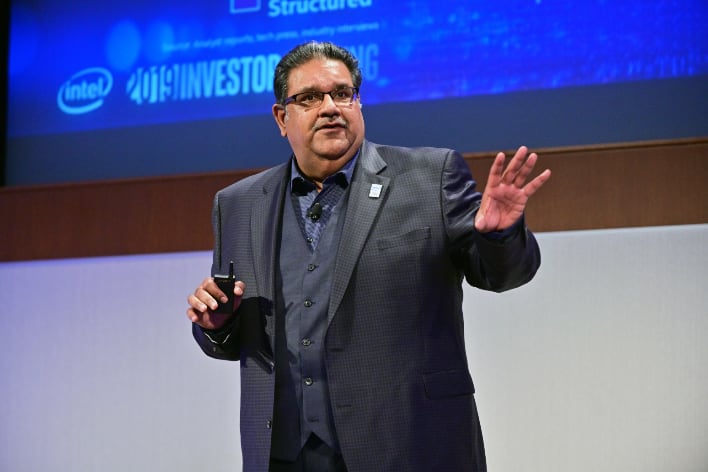Intel Chief Engineering Officer Exits Amid Executive Shakeup And 7nm Delays

The immediate impact of Intel’s executive shakeup is that Dr. Murthy Renduchintala, the company’s Chief Engineering Officer, is departing the company effective August 3rd. It’s a rather unceremonious exit for Renduchintala, who joined Intel in November 2015 as a high profile hire from Qualcomm. “I [want] to thank Murthy for his leadership in helping Intel transform our technology platform,” said Intel CEO Bob Swann, upon announcing his departure.

With Renduchintala gone, Intel is now provisioning the Technology, Systems Architecture and Client Group (TSCG) into five separate teams that will hopefully streamline the product development process and make the company quicker to react when it encounters issues (something that didn’t happen with its 10nm and 7nm process migration and designs). The five teams are listed below:
- Technology Development, led by Dr. Ann Kelleher. This group will primarily be focused on keeping Intel’s eye on the ball with respect to next-generation 7nm and 5nm process nodes.
- Manufacturing and Operations, led by Keyvan Esfarjani. Esfarjani will be in charge of Intel’s global manufacturing operations while also ramping up and the building-out of new fab capacity.
- Design Engineering, led Josh Walden. This team will focus primarily on technology manufacturing and platform engineering. Walden will serve in an interim capacity while a “permanent world-class leader” is found.
- Architecture, Software and Graphics, led by Raja Koduri. Koduri is continuing his role as the shepherd of Intel’s architecture and software strategy, and dedicated graphics product portfolio
- Supply Chain, still led by Dr. Randhir Thakur. Thakur and his team will be responsible for maintaining relationships with key supply chain players in the ecosystem and maintaining a “competitive edge” for Intel.
“I look forward to working directly with these talented and experienced technology leaders, each of whom is committed to driving Intel forward during this period of critical execution,” added Swan.
This move by Intel is not by any means a surprise, as this is the second consecutive major manufacturing process node that has been struck with delays. The 10nm node was infamously delayed multiple years, which led Intel to rely heavily on revamped versions of its 14nm Skylake architecture. Intel’s missteps have allowed AMD to gain significant traction in the marketplace with its Zen architectures over the past few years, and following the news of the 7nm delay, AMD shares soared. AMD stock is now higher than INTC for the first time in 15 years at $68.97, versus $49.57.
In recent news, it was reported that Intel is looking to TSMC to produce its Xe-HPC Ponte Vecchio GPUs on the 6nm process node.

